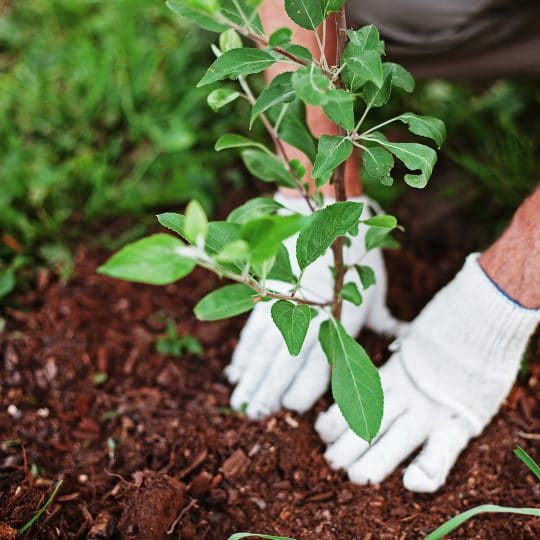5 Fall Tree Planting Tips
Plus the Types of Tree to Look For
Posted
October 27, 2022

Love all those colorful fall leaves? They sure are beautiful! Hopefully, it inspires you to plant a tree. And guess what? Fall is the best time to do that! Follow these fall tree planting tips and soon you’ll be loving your colorful trees too!
Why Fall for Tree Planting?
Fall is an excellent time to plant trees—even more so than spring. Why?
- The soil is in better shape since it’s not currently trying to defrost. It’s easier to dig planting holes.
- Mild temperatures and a moderate amount of rainfall.
- Roots grow as soon as they’re planted. There’s still enough time to get established before winter.
- Nurseries usually dig bare-root plants to sell this season, so they’re fresher. What’s left gets stored over winter and sold in the spring.
Types of Trees
No matter when you want to plant, there are many things to consider before buying a tree.
- Full size. Make sure you have enough space for it to spread its branches. Also keep proximity to your house, utility lines, and other potential hazards in mind.
- Environment. Certain trees thrive in certain areas. Any local nursery should have trees that do well where you live. But you also want to make sure you plant it somewhere it will get enough sunlight and proper drainage.
- Maintenance. Depending on what tree you get, be prepared to deal with pruning, leaves, fruit, watering, fertilizing, and more.
Once you make it to the nursery, you’ll see trees in different forms:
- Bare-root. Grown in a field and are dug up while they are leafless in either fall or spring. It’s easier to assess the health of the tree from the root condition.
- Balled-and-burlapped. These trees are also dug up, but from clay soil that is also wrapped with burlap. This soil is heavier and can be more difficult to plant depending on the size of the tree.
- Container-grown. The plant needs enough time in the container to allow its roots to fill in. Check to see if the roots are thick and tangled. A potted plant shouldn’t be three to four times the height of its container.
Pre Tree Planting
You should already have the perfect planting spot in mind before you purchase your tree. When you’re ready to plant, make sure the soil is ready too. It should be moist enough to break apart easily. If it’s not, either wait for it to dry or water it to soften it up.
Fall Tree Planting Tips
Once you, the plant, and the soil are ready, it’s time to dig!
- Clear the area. If you’re digging in the grass, cut the sod and lift it off the area you’re working in to reveal the soil. If you’re planting in a garden, remove any surrounding mulch before digging the hole. Don’t discard this material, as you’ll need it to backfill.
- Dig the right-sized hole. It should be roughly twice the diameter of the root ball. Dig only as deep as the tree needs to stand at the surface of the soil. The sides should be tapered with the full depth in the center. Break up the wall of the hole to help encourage root growth.
- Prepare the roots. Remove any damaged or blackened roots from bare-root trees. Untangle any roots from containers. Don’t break the ball of burlapped trees. You can even leave natural burlap scraps in the hole, but any synthetic material should be removed. Shorten any lanky roots that don’t fit into the hole. Backfill some soil into the hole to create a mound for the roots across. Steady the plant with another layer of soil.
- Backfill. Work the soil in among the roots and make sure it isn’t packed tightly. Add water to help settle the soil and prevent air pockets. Fill the hole and add a mini mound to help prevent water from pooling.
- Mulch. Spread a few inches of wood chips or straw over the bare ground within a few inches of the trunk. Mulch helps insulate roots, retains moisture, and helps prevent weeds.
Post Tree Planting
Once your tree is planted, you may decide to stake it to help support tall, young trees from windy areas. No matter what tree you just planted, it’s going to need more water in the beginning. Slowly soak the ground around the tree regularly for at least the first year of growth.
From tree selection to regular maintenance, the first year after a tree is planted is critical to its future well-being. With a little planning and a little more attention, the tree you plant now will thrive for many falls to come.